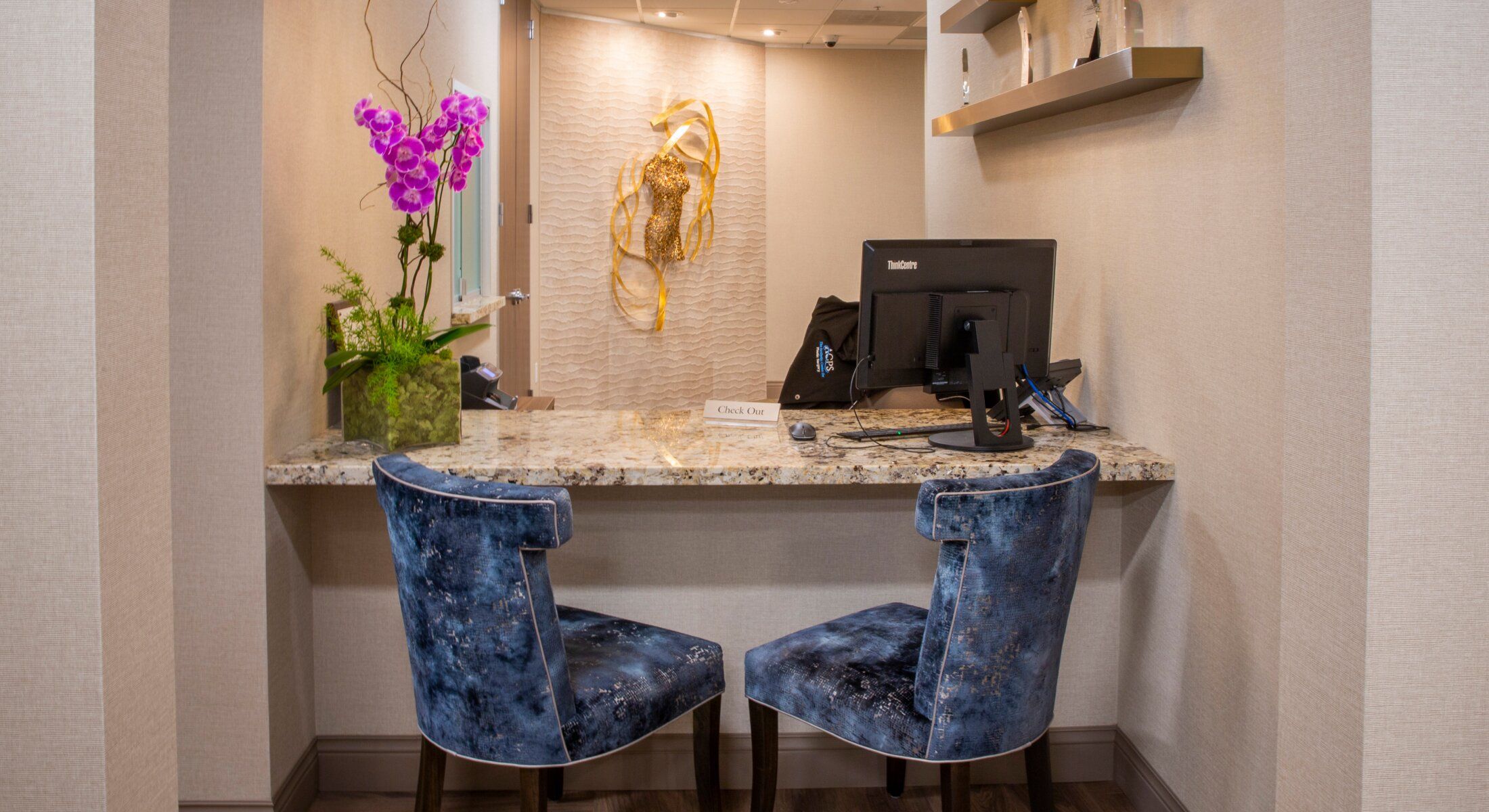




Interested in enhancing your breast size while achieving a more sculpted body? The dual benefit of fat transfer is that breast enhancement and body contouring allow you to do both. By using your own fat for breast augmentation, this procedure offers a natural approach to achieving fuller breasts and a contoured physique. This article will explain how it works, its benefits, and what to expect.
Breast augmentation through fat transfer is a procedure that enhances the breasts naturally using fat cells from an individual's own body. Surgeons use liposuction to extract body fat from different regions, like the abdomen, thighs, or hips, and inject this harvested fat into the breast tissue to boost their size and improve overall shape. Also known as autologous fat transfer or lipofilling, among other names, this approach aims at subtly augmenting breast volume while maintaining a natural feel akin to authentic breast tissue.
Initially, surgeons employ a slender tube known as a cannula to suction excess body fat from specific areas during liposuction. Afterward, they cleanse and separate usable adipose (fat) cells in preparation for injection into the patient's chest area. The use of one's own accumulated fatty deposits not only affords enhanced contouring of breasts but also imparts a more innate texture when compared with conventional implants.
Over time and through continual refinements over three decades within this field of cosmetic surgery – advancements have significantly fortified both safety standards and success rates associated with procedures such as these, which involve transferring one's very own lipid tissues. It ultimately offers results mirroring those seen in unaltered physiology while negating risks common among artificial implant options — thus becoming particularly attractive for individuals seeking subtle yet tangible improvements via non-synthetic means concerning their pursuit towards amplifying bust definition.
Fat transfer breast augmentation offers a twofold advantage: it not only increases breast size but also sculpts the body through the elimination of excess fat. By employing liposuction, unwanted fat is extracted from areas like the abdomen, thighs, or hips to slim down these regions while simultaneously providing filler for enhancing breast volume.
The use of this transferred fat to amplify breast fullness leads to breasts that look more natural. The dual benefit enables an improved body contour alongside more voluptuous breasts, positioning it as an attractive option for those seeking comprehensive bodily enhancement.
Fat transfer breast augmentation seamlessly incorporates body contouring by using the technique of liposuction. During this procedure, surgeons extract fat from specific regions like the abdomen, thighs, hips, and flanks. This not only removes unwanted fat but also shapes these areas for a more attractive and defined silhouette.
The process utilizes tiny incisions along with a slender tube known as a cannula to meticulously remove fat while keeping scarring to an absolute minimum. The harvested fat is subsequently purified before being injected into the breasts. By doing so, one can achieve enhanced breasts without compromising on refining other body parts, offering an improved appearance both at the site of extraction and enhancement.
Employed with precision, this method ensures optimal integration of transferred breast tissue, minimizes potential complications, and fosters natural aesthetics in look and touch. Consequently, individuals looking for comprehensive enhancement find this dual-benefit approach highly appealing when considering breast augmentation combined with body sculpting techniques.
Fat transfer breast augmentation stands out by delivering results that resemble a natural breast appearance. This method utilizes the individual's own fat, providing an authentic feel that is often preferred over the sensation from traditional implants.
The evolution of fat grafting techniques in recent years has greatly enhanced the efficacy and safety of this procedure. Such progress renders it an increasingly popular option for individuals aiming to achieve a naturally augmented bust through fat transfer methods.
The advantage of undergoing fat transfer procedures, particularly for breast enhancement, is the considerably reduced scarring. Fat transfer breast augmentation diverges from the traditional approach using breast implants by employing smaller incisions necessary for both harvesting fat and its injection into the breasts. This method leads to far less noticeable scarring, greatly improving the cosmetic results.
To this, the limited size of incisions required in a fat transfer breast procedure aids in quicker healing and leaves only minimal marks as evidence of surgery. This element significantly contributes to making fat transfer an attractive alternative for individuals looking to enhance their bust line through cosmetic surgery while avoiding prominent surgical scars.
Breast augmentation via fat transfer is celebrated for its ability to improve breast shape and texture. This technique involves the injection of fat into targeted sections of the breasts that appear deflated or could benefit from additional fullness, thereby creating a more voluminous and natural-looking contour. The transplanted fat naturally integrates with existing breast tissue, emulating the sensation and appearance of natural breasts.
For those who prefer modest enhancements over pronounced alterations in their silhouette, this method offers an ideal option. Fat injections aim to subtly increase breast size and refine their shape while avoiding the artificial touch that may come with traditional implants. Numerous women opt for this route as it aligns perfectly with their aspirations for enhanced yet authentic-appearing bust contours.
Breast augmentation through fat transfer presents several advantages over traditional breast implants. It utilizes a unique method of enhancing the bust line by repurposing an individual's own fat, diminishing the chances of adverse reactions such as allergic responses or rejection that often occur with synthetic alternatives. This procedure significantly lowers the probability of encountering capsular contracture and implant leakage – complications frequently linked to conventional breast implants.
Employing one's own tissue for transfer during breast augmentation leads to results that are more aligned with natural body contours. This approach delivers enhancements that appear and feel authentic, steering clear of the sometimes unnatural aesthetic associated with standard implants. Fat transfer for breast enhancement offers another compelling benefit: minimal scarring alongside reduced complication risks makes it an increasingly popular choice among individuals looking to augment their breasts safely and effectively.
Candidates ideal for fat transfer breast augmentation must fulfill the following criteria:
Individuals who do not have an ample amount of body fat, or conversely, those with excess fat, might be deemed unsuitable for this procedure.
Smokers and individuals suffering from specific health issues such as diabetes or heart disease may not be considered optimal candidates. It's important for potential patients to comprehend both the medical implications and necessary body-fat prerequisites before deciding if they are fit for this surgical enhancement.
To ascertain whether this method is aptly suited to attain their breast augmentation goals, prospective clients should seek advice from a board-certified plastic surgeon.
The process of fat transfer breast augmentation commences with the removal of fat from body areas such as the abdomen, hips, or thighs. This is performed under local anesthesia using liposuction techniques. Post-extraction, this harvested fat undergoes a purification procedure employing either a centrifuge or filtration system to segregate healthy and viable fat cells while discarding undesirable elements, including blood and oil.
Following its purification, the isolated fatty tissue is delicately injected into the breast area in a balanced manner to sculpt a natural contour. The goal is for the integration to meld smoothly with existing breast tissue to produce an enhanced yet naturally fuller look.
For roughly six months after implantation, during which time new blood supply develops within them, careful observation of these transferred cells ensures no excessive injection or overfilling takes place. By adhering rigorously to each phase of this methodical approach. Enduring and pleasing aesthetic outcomes are achieved through this form of enhancement by utilizing one's own fat stores for an increase in bust size known as "fat transfer" or, specifically, "fat transfer breast."
Typically, the recovery period for fat transfer breast augmentation is less extended compared to traditional implant procedures. Within approximately two weeks, most individuals are capable of resuming light activities as part of a gradual return to their normal day-to-day schedules. Still, it's worth noting that full recovery and healing within the breast tissue could span up to six months—consulting with your surgeon about specific recovery expectations based on individual circumstances is crucial.
Common postoperative effects such as swelling and bruising tend to diminish by the end of two weeks following surgery. As for longevity, outcomes from fat transfer breast augmentations can be durable once the body has assimilated the grafted fat. Yet it should be anticipated that around 30% - 50% of this transferred fat might get reabsorbed by your body over time.
Each patient's experience will differ, leading some to require additional sessions to fully achieve their desired results. Changes in weight or natural aging processes may alter how an augmented bust looks after undergoing a procedure like this one, which underscores why maintaining ongoing appointments with your medical professional is key not only for supervising progress throughout healing but also for addressing any complications that could appear later on.
While fat transfer breast augmentation generally has very low risks and complications, it is important to be aware of potential issues. Common risks associated with the procedure include:
Approximately 5% to 10% of patients may experience fat necrosis, which can mimic symptoms of breast cancer and require further evaluation. Choosing a qualified, board-certified plastic surgeon is crucial to reduce risks and ensure satisfactory outcomes.
To minimize risks, candidates should be evaluated for health conditions like diabetes, autoimmune disorders, and cardiovascular diseases. Consulting with a knowledgeable surgeon allows patients to address their concerns and make informed decisions about the procedure.
Fat transfer may be integrated with other aesthetic interventions, such as abdominoplasty or extra liposuction, to amplify the appearance of different areas, such as breasts, face, and buttocks. Merging these techniques offers a holistic strategy toward body improvement, ensuring optimal visual results.
A patient who experienced this procedure valued the dual advantage it provided: eliminating fat from her thighs while simultaneously aiding in her body contouring endeavors. The method augments the breasts and refines the general bodily silhouette, establishing it as an exceptionally adaptable choice for individuals pursuing varied enhancements.
Preserving the outcome of fat transfer breast augmentation necessitates a commitment to consistent weight and healthy living habits. Drastic shifts in body weight may alter how augmented breasts look, so it's crucial to steer clear of such substantial weight changes.
For enduring effects after breast augmentation through fat grafting, one should prioritize keeping one's weight constant. Embracing this approach is key to sustaining the enhancements made by the procedure. Integrating a balanced eating regimen along with steady physical activity can help maintain these results stable for an extended period.
Fat transfer breast augmentation offers a unique combination of breast enhancement and body contouring, providing natural-looking results with minimal scarring and a reduced risk of complications. By using your own body fat for the procedure, you can achieve fuller breasts while also sculpting other areas of your body. Ideal candidates are those with sufficient body fat and a stable, healthy lifestyle. The procedure, which involves liposuction and fat injection, ensures an even distribution of fat for a natural shape. While the recovery process is relatively short, maintaining a stable weight is crucial for long-term results. Consulting with a qualified surgeon is essential to minimize risks and achieve the best outcomes. Embrace the dual benefits and consider fat transfer breast augmentation for a holistic approach to body enhancement.